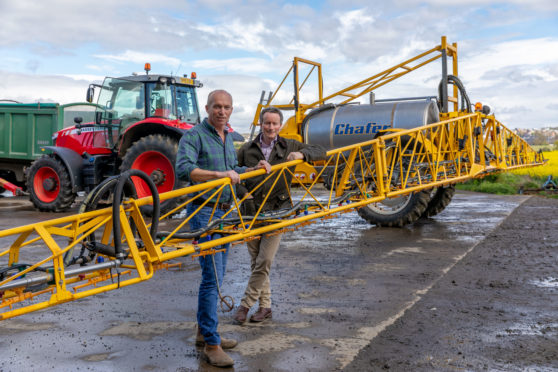It has taken just a couple of decades for contract farming to become a mainstream route for landowners and farmers to both grow and de-risk their businesses.
Farms with big acreages rarely come up for sale but huge arable units are now being built up by farmers working in partnership with landowners who have become increasingly reluctant to let their land on a traditional tenancy basis.
Add to those drivers the attraction of sharing the risks when commodity prices are volatile, and it’s not surprising contract farming has become a win-win arrangement.
The legal agreement that has been in place between landowner Lord Charles Bruce of Broomhall Estate near Dunfermline and farmer-contractor John Hutcheson for almost 20 years has become the subject of a postgraduate study which is just under way.
The estate is one of the pioneers of contract farming, but its contribution to agricultural evolution began in the mid 1700s with the opening of a lime quarry which developed into Europe’s biggest limeworks, with 11 million tonnes of hard carboniferous limestone quarried and burned in a bank of 14 kilns.
The lime was then exported up every estuary in the country to sweeten Scotland’s most acidic soils.
These days a sweet relationship based on mutual respect, fair dealing and good communication is what Charles Bruce and John Hutcheson attribute to the success of their farming arrangement.
Based at Leckerstone Farm near Dunfermline, John farms around 1,200 acres between Inverkeithing and Kingseat which is either owned, tenanted or rented on short-term leases. When the Bruce family made the decision to take a step away from farming directly and gave him the opportunity to double his acreage through contract farming, he didn’t hesitate.
“When I came home from university my father was running the farm and I managed the arable land at Broomhill for eight years, so I knew it well and it made sense to merge the operations to achieve the economies of scale that are necessary today,” he said.
“The benefits are obvious as we can pool operations, rationalise equipment and bring everything under one operation.
“We can do block cropping and, because it’s all managed under one unit, it’s more efficient.
“I believe it’s the way ahead for farming businesses in Scotland as there’s an immediate pooling of resources. Local growers are increasingly expanding on the back of contract farming opportunities as it enables them to take on more land quickly.”
The legal agreement lasts for five years, but he insists the most fundamental aspect of contract farming is the relationship between the landowner and contractor.
“Personal relationships matter,” he said. “Mutual respect is at the core of these things working. You need to treat one another fairly and you need trust on both sides.”
Lord Bruce sees contract farming as an example of the rationalisation every industry needs to face.
“As landowners it means we don’t need to have capital tied up in plant and equipment, and John is very well connected to other growers’ organisations and the technological and marketing side of farming,” he said.
“We meet him for structured monthly meetings which include a discussion about the cropping he is suggesting and how that integrates into the overall estate management.
“It is, of course, dependent on the quality of the relationship with the contractor – it’s no different from any other relationship.
“Our business at Broomhall has become more and more focused on supporting the main house which now hosts bespoke tours and events, so the estate has to look immaculate. That business has to be integrated with the farming calendar because we want to continue for this to be a traditionally managed estate and not an artificially manicured landscape like a golf course.
“However it’s vitally important the farming continues seamlessly.”
For his part, John takes the estate’s active shoot into account when planning cropping rotations of wheat, barley and milling oats.
“Certain fields need to be left with stubble, so we come up with a proposal based on both arable and sporting considerations,” he said.
nicolson@thecourier.co.uk







